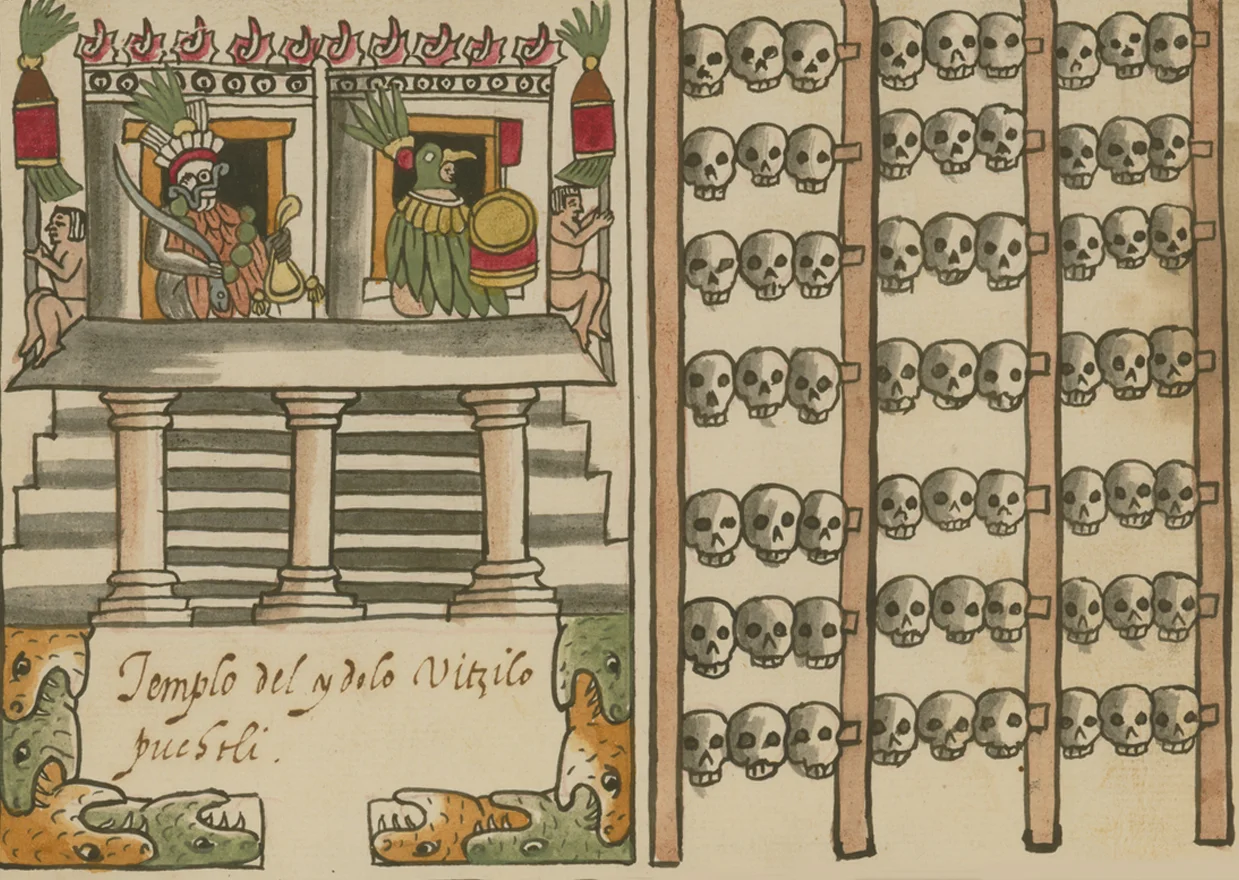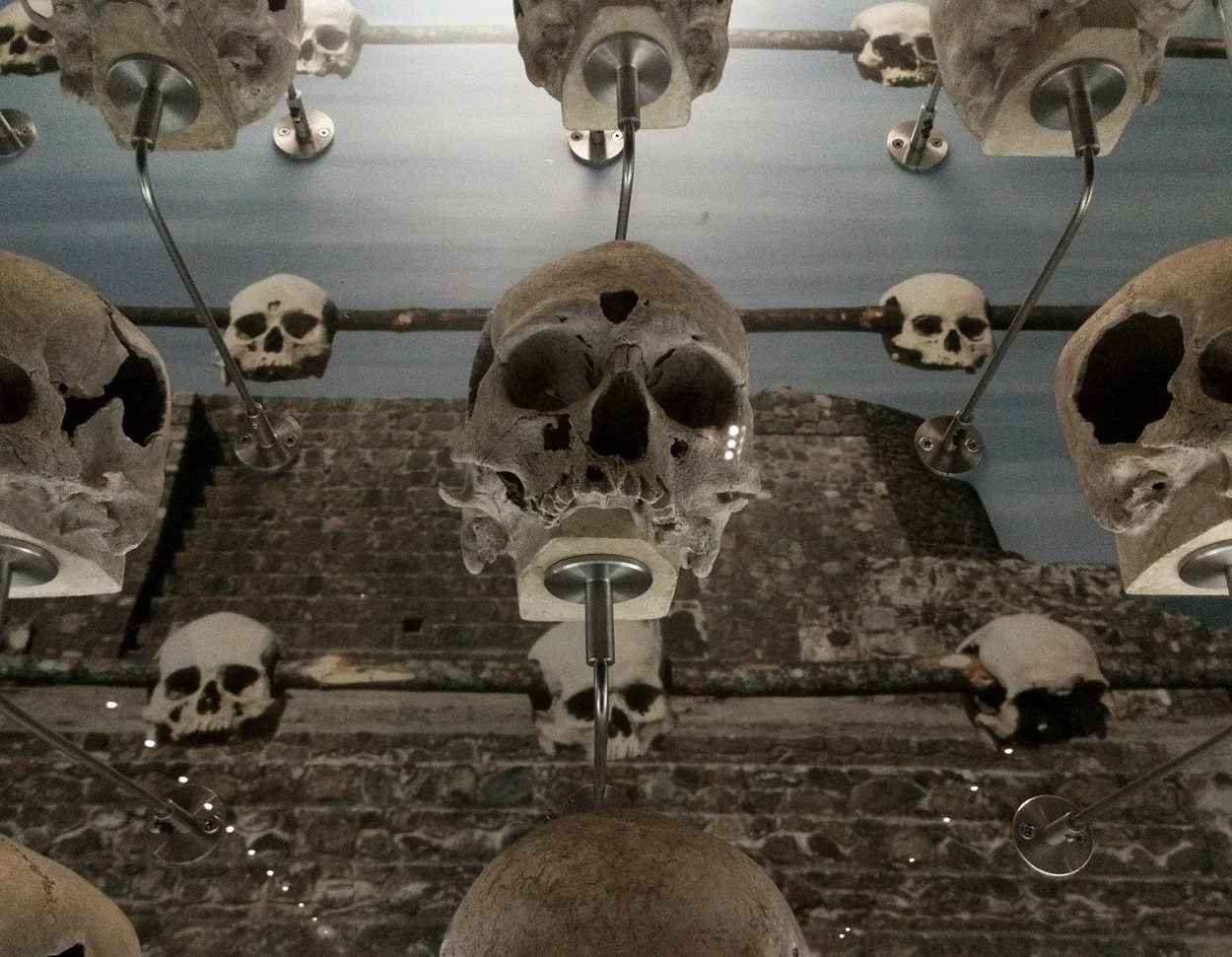Archaeologists from the National Institute of Anthropology and History (INAH), have suggested that the high percentage of female remains in the Hueyi Tzompantli (Great Skull-rack) are associated with the origin myth of Huitzilopochtli.
The Hueyi Tzompantli is a skull rack located near the ruins of the Templo Mayo, in the Aztec capital of Tenochtitlan (present-day Mexico City, Mexico).
The Hueyi Tzompantli was used for the public display of human skulls, typically those of war captives or other sacrificial victims, and was built in three stages during the time of the Tlatoani Ahuízotl government, between AD 1486 and 1502.
Ahuitzotl, meaning “Water Thorny”, was the eighth Aztec ruler, the Huey Tlatoani of the city of Tenochtitlan. During his reign, Ahuitzotl supervised a major rebuilding of Tenochtitlan and the expansion of the Templo Mayor in the year 8 Reed (AD 1487). Ahuitzotl also conquered the Mixtec, Zapotec, and other peoples from Pacific Coast of Mexico down to the western part of Guatemala, more than doubling the size of lands under Aztec dominance.
In a new study by archaeologist, Raúl Barrera Rodríguez, it is suggested that the high percentage of female remains in the Hueyi Tzompantli are associated with the myth of the confrontation between Coyolxauhqui, the lunar goddess, and Huitzilopochtli, the patron of the Aztec who was the solar and war deity.

The study shows that the Hueyi Tzompantli consists of 655 human skulls, of which 60% belong to male individuals, 38% female and 2% infants. In historical sources, there are few mentions of female warriors chosen for sacrifice; however, the high percentage may have been pregnant women who had a stillbirth or were in fact female warriors.
Sacrificial victims were laid across a sacrificial stone at the top of the Templo Mayor, a large, stepped pyramid, where officiating priests used a ceremonial obsidian knife to carve out the still beating heart from the chest.
The heart was considered the ultimate symbol of a person’s life and was presented to Huitzilopochtli. It was then burnt, enabling the victim’s life force to rise via the smoke to Huitzilopochtli, who would take on new strength and go on giving light and heat the next day in a battle against the darkness.
Rodríguez believes that the architectural axis dedicated to Huitzilopochtli on the south side of the Templo Mayor, leading towards the Hueyi Tzompantli, used female sacrifices to recreate the path followed by Coyolxauhqui, who is said to have crossed Tzompantitlan and Coaxalpan on her way to Mount Coatepec (“Serpent Mountain”).
Coyolxauhqui led an attack against her mother, Coatlicue, the maternal Earth deity, after learning that she became miraculously pregnant. Coatlicue gave birth to a fully grown and armed Huitzilopochtli, who sprang from her womb and killed Coyolxauhqui, throwing her body down the side of Coatepec, which is recreated by ritually throwing the bodies of the sacrificial victims down the steps of the Templo Mayor.
Header Image Credit : Raulhdxtrejo – CC BY-SA 4.0





